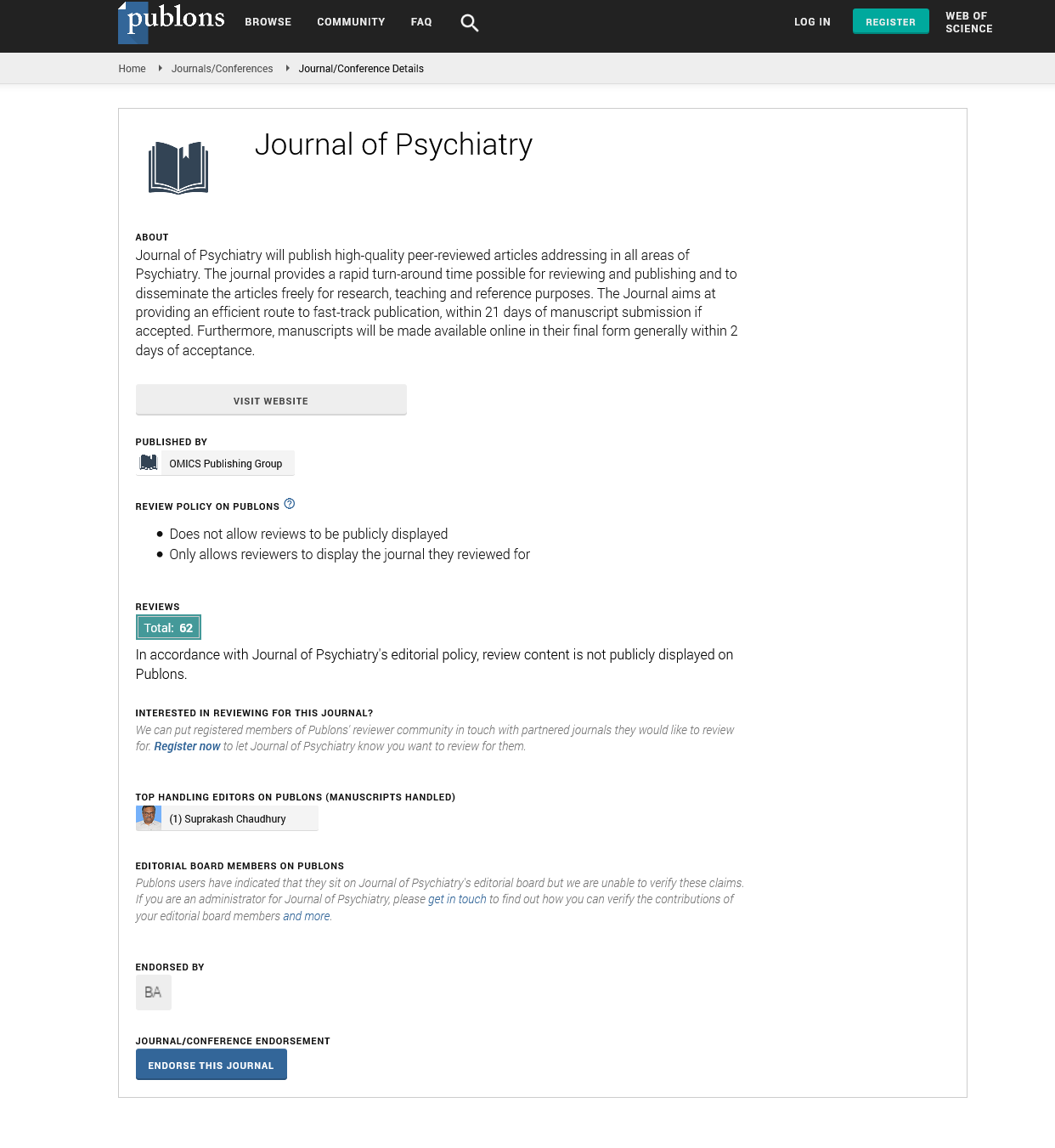Indexed In
- RefSeek
- Hamdard University
- EBSCO A-Z
- OCLC- WorldCat
- SWB online catalog
- Publons
- International committee of medical journals editors (ICMJE)
- Geneva Foundation for Medical Education and Research
Useful Links
Share This Page
Open Access Journals
- Agri and Aquaculture
- Biochemistry
- Bioinformatics & Systems Biology
- Business & Management
- Chemistry
- Clinical Sciences
- Engineering
- Food & Nutrition
- General Science
- Genetics & Molecular Biology
- Immunology & Microbiology
- Medical Sciences
- Neuroscience & Psychology
- Nursing & Health Care
- Pharmaceutical Sciences
Physical and mental instability: A comparison between normal and depressive students within a dormitory
Euro Global Summit and Medicare Expo on Psychiatry
July 20-22, 2015 Barcelona, Spain
Seoyoun Kim and Hyojae Kim
Posters-Accepted Abstracts: J Psychiatry
Abstract:
Students?mental stability can be restored by comfort from a familiar home environment and support from their parents. However, many boarding students face various psychological and physical problems by themselves and cannot benefit from home care. The goal of this study is to examine psychological and emotional stress among students living in a dormitor Between October and November 2014, 124 students (74 male, 50 female) were enrolled at Korea International School (KIS) in Jeju, South Korea. By the Zung Self-rating Depression Scale (ZSDS), they were divided into two groups: the normal group and the depression group. I evaluated each group under the following circumstances: (1) individual school life (breakfast, snack, school class time, self study time, exercise time, sleep time), (2) physical health (neurologic, ophthalmic, auditory, respiratory, cardiovascular, gastrointestinal, urologic, dermatologic), (3) factor analysis of ZSDS. The Statistical Package for Social Sciences Software (SPSS-version 21) was used to analyze the data. 45.9% of all enrolled students scored in the mild to moderated depression range. Female students had a more prevalent depression rate (female: 54%, male: 41%). There was nearly no statistical difference in physical symptoms, except for dyspepsia (28.4%/47.4%), arthralgia (17.9%/36.8%), and lower back pain (40.3%/59.6%) in the normal and depression groups respectively (P<0.05). The normal range group students had more study time (3.2/2.9 hours) and exercise time (77.2/67.4 minutes). In the factor analysis of ZSDS, the depressive group had a more manifest depressed mood and 50 percentage higher ZSDS items score than the normal group: core depressive factor (items 1: depressed affect, items 3: crying spells, items 14: hopelessness, items 17: personal devaluation, items 18: emptiness, items 20: dissatisfaction), anxiety factor (items 4: sleep disturbance) Our study showed there was nearly no difference in physical symptoms between both groups. However, it informed that the group having depression has more problems with motor symptoms because the group lacks an adequate amount of exercise due to psychological instability. In addition, this study also showed that mood disturbance was clearly more intense while the cognitive functions related to academic performance were proven not to be problematic in the depressive group.

